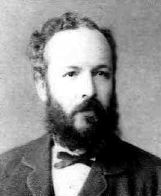

After early education at home from a private tutor, Georg Cantor attended primary school in St. Petersburg, then in 1856 when he was 11 years old his family moved to Germany. His teachers gave him outstanding reports, which mentioned in particular his exceptional skills in mathematics, in particular trigonometry. He entered the Polytechnic of Zurich in 1862. His studies at Zurich, however, were cut short by the death of his father in June 1863. Cantor moved to the University of Berlin where he became friends with Herman Schwarz, a fellow student. Cantor attended lectures by Weierstrass, Kummer and Kronecker.
While at Berlin, Cantor became much involved with the Mathematical Society being president of the Society during 1864-65. He was also part of a small group
of young mathematicians who met weekly in a wine house. After receiving his doctorate in 1867 in number theory, Cantor taught at a girl's school in Berlin. Then, in 1868, he
joined the Schellbach Seminar for mathematics teachers in Halle.
There the direction of Cantor's research turned away from number theory and towards analysis. This was due to Heine, one of his senior colleagues,
who challenged Cantor to prove the open problem on the uniqueness of representation of a function as a trigonometric series. Cantor solved the
problem in 1870. He published further papers between 1870 and 1872 dealing with trigonometric series.
Cantor was promoted to Extraordinary Professor in 1872, and in that year he began a friendship with Dedekind. Cantor published a paper on trigonometric series in 1872 in which he defined what are now known as "Dedekind cuts". In 1873, Cantor proved the rational numbers and the algebraic numbers are countable and that the real numbers were not countable. He published this in a paper in 1874, and it is in this paper that the idea of a one-to-one correspondence appears for the first time, albeit indirectly.
In 1877, Cantor proved that there was a one-to-one correspondence of points on the interval [0, 1] and points in d-dimensional space. Cantor was surprised at his own discovery and wrote:
"I see it, but I don't believe it!" Of course this had implications for geometry and the notion of dimension of a space. Between 1879 and 1884 Cantor published a series of six papers designed to provide a basic introduction to set theory. The fifth paper presented of the transfinite numbers as an autonomous and systematic extension of the natural numbers.
His last major papers on set theory appeared in 1895 and 1897 and are fine surveys of transfinite arithmetic. The two year gap between the two papers is due to the fact that Cantor hoped to include a proof of the continuum hypothesis in the second part. However, it was not to be, but the second paper describes his theory of well-ordered sets and ordinal numbers. About this time, Cantor began to discover paradoxes in the theory of sets.
Cantor struggled off and on with depression.
Cantor published a rather strange paper in 1894 which listed the way that all even numbers up to 1000 could be written as the sum of two primes. Since a
verification of Goldbach's conjecture up to 10000 had been done 40 years before, it is likely that this paper says more about Cantor's state of mind than it does about Goldbach's conjecture. Whenever Cantor suffered from periods of depression he tended to turn away from mathematics and turn towards philosophy and his big literary interest
which was a belief that Francis Bacon wrote Shakespeare's plays. Later in life, he became more and more disturbed, sometimes acting erratically in public.
Cantor retired in 1913 and spent his final years ill with little food because of the war conditions in Germany. He died of a heart attack.